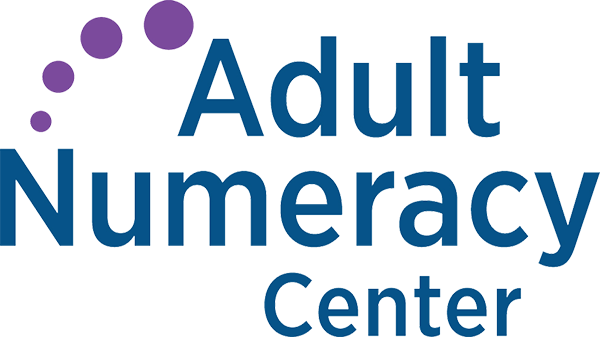Building Classroom Community in an Online Environment
by Jean Oviatt-Rothman
Building a strong and supportive classroom community is essential for students to feel a sense of belonging and safety. This sense of belonging and safety allows students to thrive, take academic risks, share their ideas and strategies, or propose different ways of seeing and solving problems.
Building a classroom community among online learners can feel daunting when teaching remotely. I teach in a fully online adult education program, serving students all over the state who come together with me for two 90-minute STEM classes per week. None of us have ever met in person, yet I know many of my students and they know each other as well as students in an in-person setting do. I have found two strategies that are especially helpful in building our online classroom community: opening meetings and sharing photos. While these work well online, they work equally well for building classroom community in person.
Opening Meeting
The Responsive Classroom approach is widely used at the K-8 level to build positive, inclusive classroom communities by integrating academics and social-emotional learning. My program adapted Responsive Classroom’s Morning Meeting into our Opening Meeting structure for all of our adult ed and ESOL classes.
My Opening Meetings begin as soon as students enter our Zoom classroom. I greet each student by name, and they frequently greet each other and chat informally. I stress the importance of knowing and using each others’ names throughout class. Once everyone has arrived, our Opening Meeting continues with a sharing time. I project a prompt, usually a thought-provoking quote, image, video, or question, to which everyone responds, verbally or in the chat. The goal is to provide a way for students to connect and for everyone to get to know each other better. It also encourages low-stakes participation from the start of class. Sometimes, I use the sharing time as a social-emotional check-in and coordinate grid mini-lesson with a mood meter similar to the one below, which was developed by the Yale Center for Emotional Intelligence.
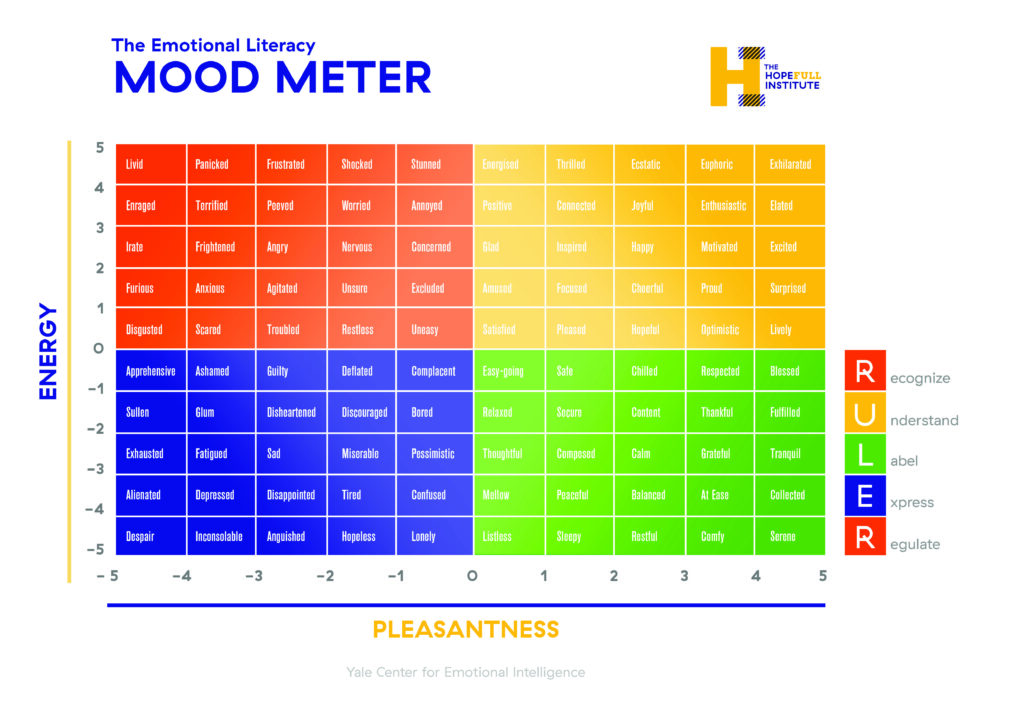
Available for free download at https://www.thehopefullinstitute.com/wp-content/uploads/2021/08/A3_MOOD_METER_.pdf
Other times, I use this as an opportunity to introduce students to inspiring words and ideas from prominent and diverse mathematicians and scientists. We conclude the sharing portion of the Opening Meeting by previewing our agenda for the day.
The final segment of our Opening Meeting is an activity. This is where I incorporate math instructional routines like Slow-Reveal Graphs, Would You Rather, Open Middle Problems, and Which One Doesn’t Belong. I frequently select an activity that serves as a review of the prior lesson or as a formative pre-assessment of the day’s math topic to gauge students’ level of understanding at the start of class. One activity that has become popular with students is looking at student-submitted photos and identifying as much math as possible in the photos.
Sharing Photos
At the start of this school year, my SABES Math Team Coach Aren Lew suggested having students submit photos of math in their daily lives, as a way for students to begin to notice that math is all around us. My students loved this assignment! Students shared pictures of their children, their meals, their collections, their neighborhoods, and their hobbies. This allowed them to connect around commonalities. Not only did it start to open their eyes to math in the real world, but it also gave them small windows into each others’ lives. When I share a student-submitted photo, I don’t reveal who shared it, but usually, the student who did excitedly claims ownership. I pose simple questions such as, “What math do you notice?” or, “What math questions could you ask?” Students enjoy discussing and finding as many math connections as possible in a photo. They often find unexpected math connections.
Here are some examples:
A nutrition facts label prompted discussion of multiplication, division, percentages, proportions, and measurement.
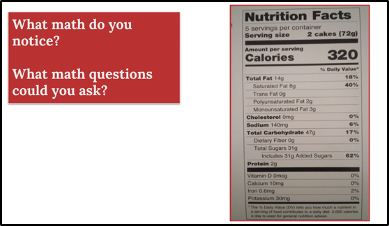
A Boston street view produced a rich geometry discussion of shapes, lines, and angles.
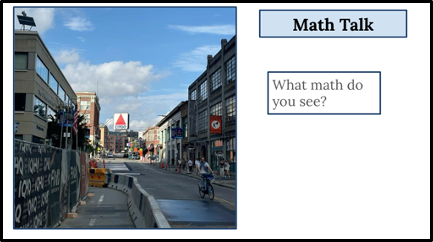
A picture of a garden bed raised ideas of area and perimeter, multiplication, measurement, volume, and arrays (when students noticed a brick wall in the background).
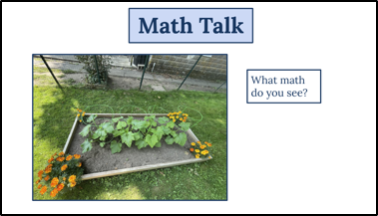
A picture of a calendar brought up discussion of time, measurement, multiplication, and patterns.
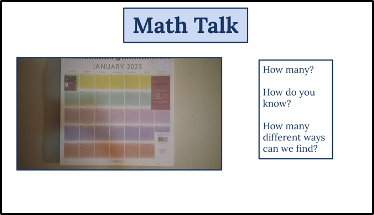
Students were invested because they drove the discussions. The pictures and ideas were entirely theirs, and there was no right or wrong answer. Discussing the photos also provided an accessible entry point for all students. Students who were learning English could describe what they saw with the words they knew, and sometimes they had different math connections than native English speakers. Not only was everyone connecting math to the real world, but they were also connecting with each other and building a supportive classroom community.

Jean Oviatt-Rothman is a Senior Learning Specialist and STEM Instructor for MassLINKS Adult Education Online Academy, a fully remote state-wide program. She worked previously in math and science coaching and curriculum leadership at the K-12 level. Jean is a member of the Adult Numeracy Network.
